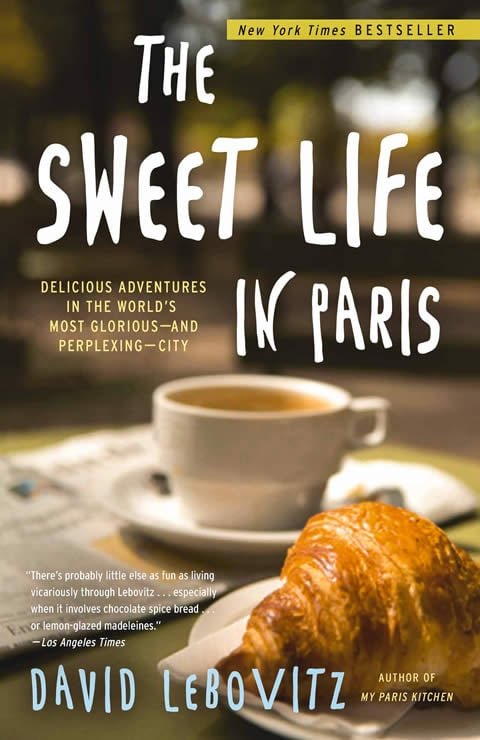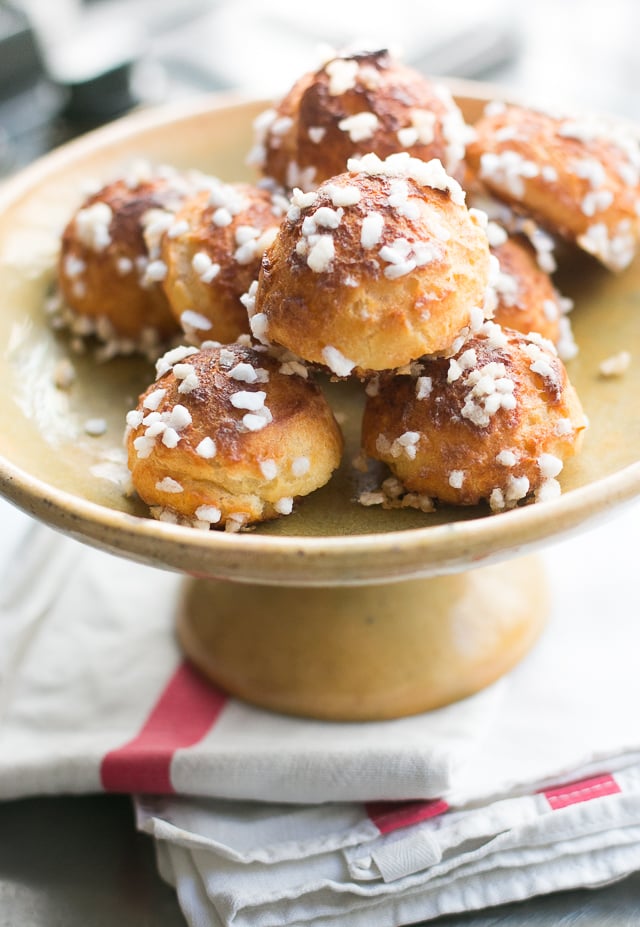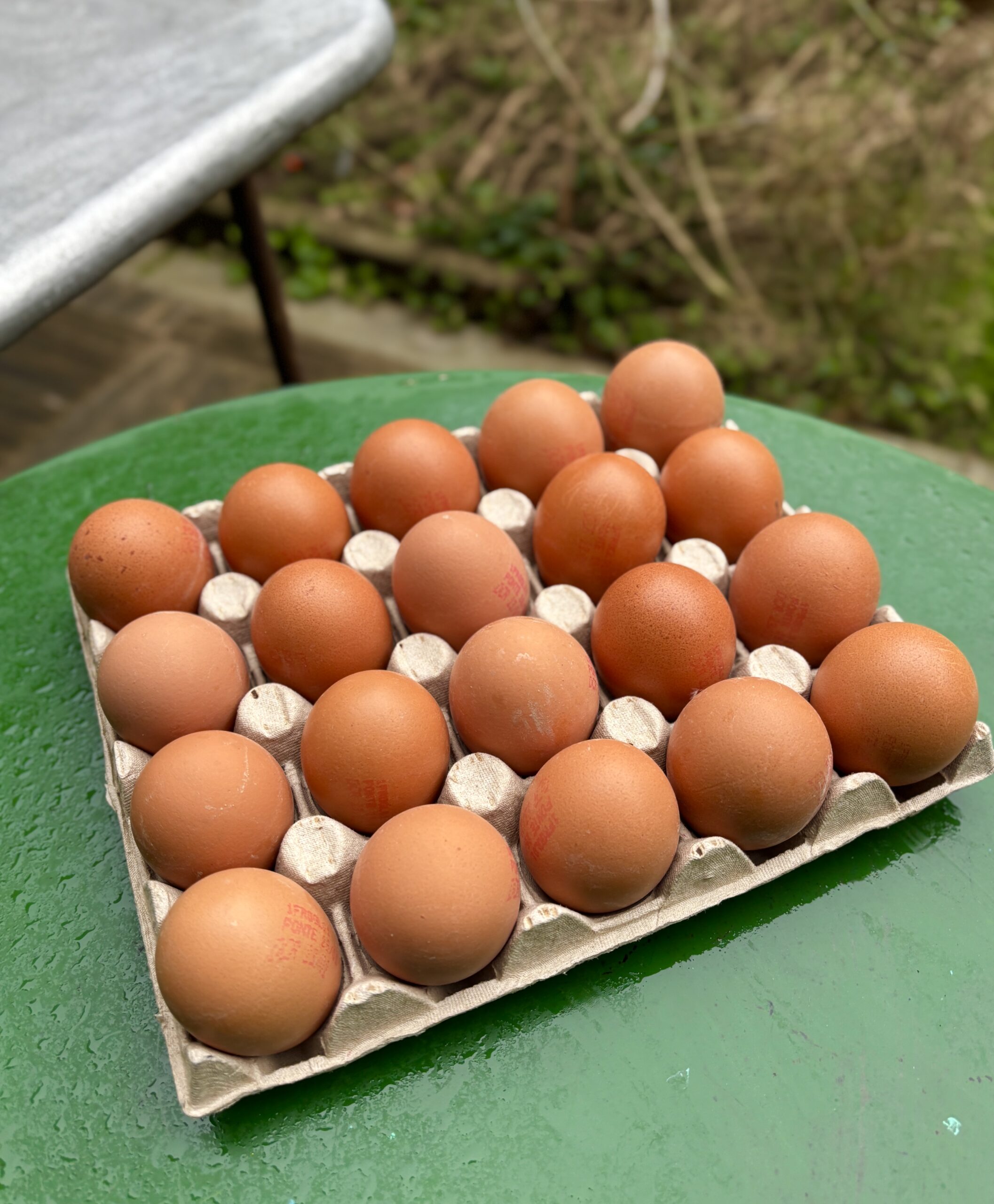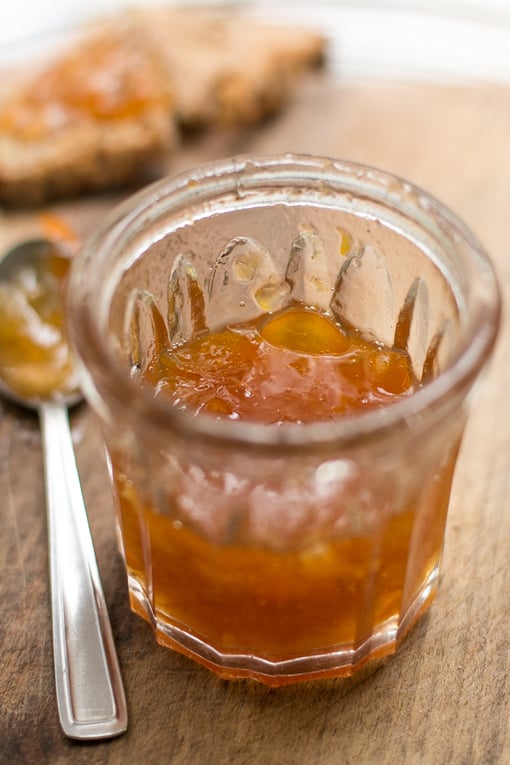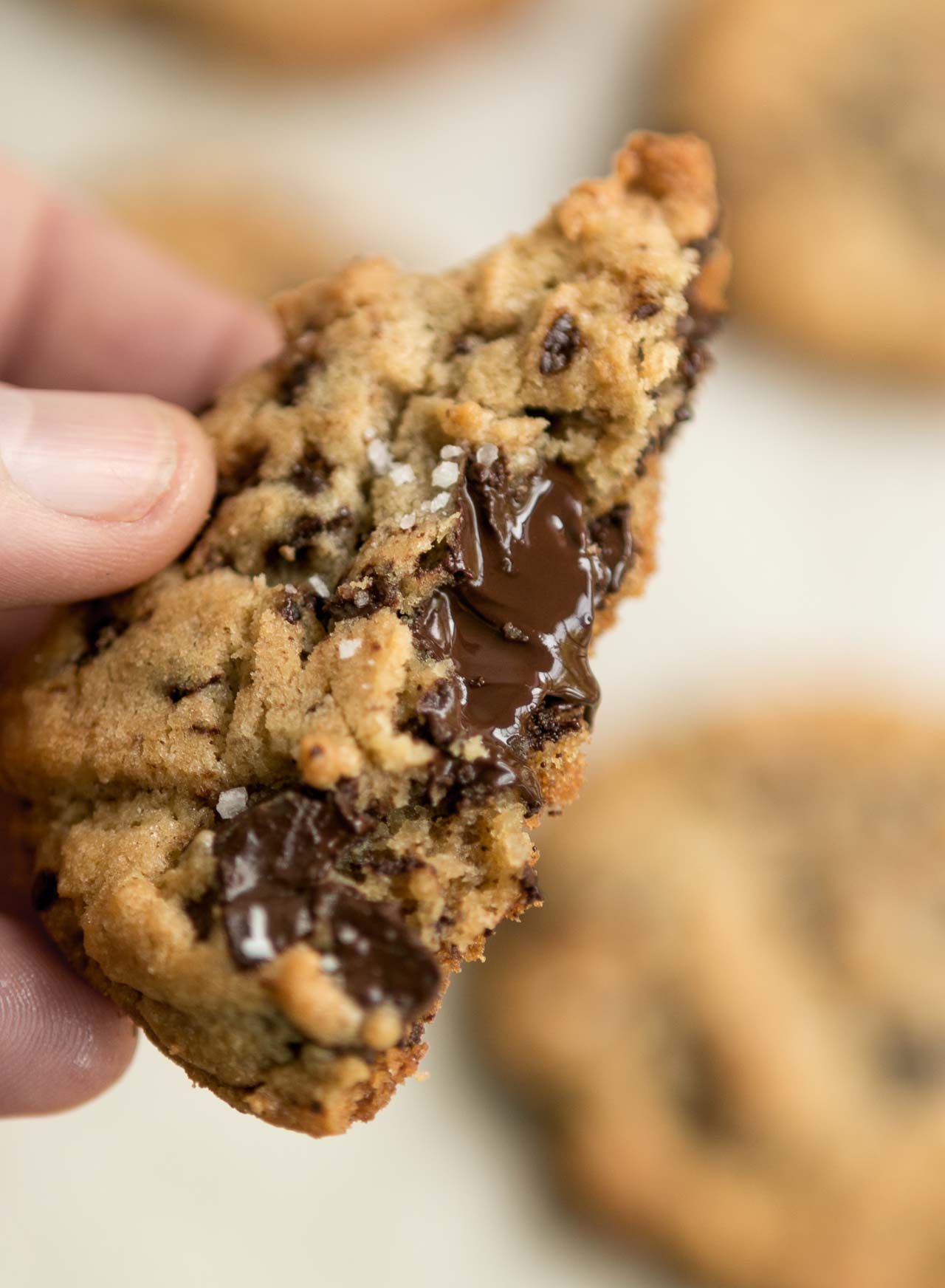Molecular Gastronomy and Playing With Powder
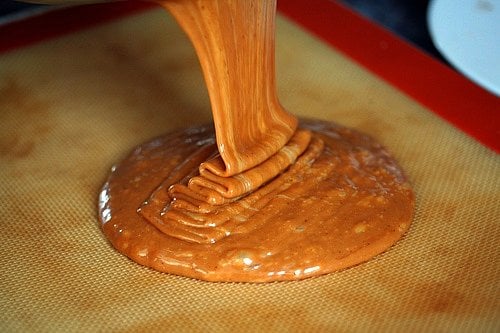
There’s a lively debate about Molecular Gastronomy in the culinary community. For the most part, from what I’ve heard, it’s all rather derisive. Just like Matisse was widely-panned for painting a woman’s face with a green stripe down the middle, I think we’re going to have to let time tell us if this is just a passing fancy or if it’s something that’s here to stay.
I’ve been sharing my apartment for the past few months with the Alinea cookbook. We haven’t socialized much, but we’ve been circling each other, warily.
My first though when I opened the book was to scratch my head, and think, “What the heck am I going to make from this?”
Like Alinea, the restaurant, even though I’ve never eaten there, when you do go to a place that like (or read through a book like this), you just need to drop everything else that you think and get into the mindset of the chef and the food. If you’re expecting to call the shots and control the experience, you’re going to miss out and it’s not worth the visit. One should just go, and let go.
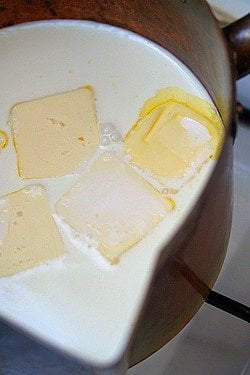
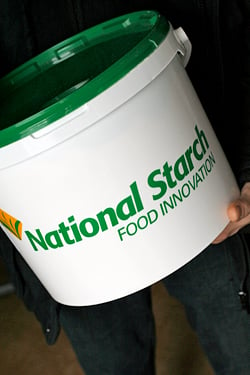
As for the book, I’d venture to say that this isn’t really a cookbook. It’s a manifesto by Grant Achatz, the chef at Alinea. If you’re looking for “Take 1 cup of chicken stock and poach two 5-inch chicken breasts, each weighing six ounces, for twenty-two minutes…” forget it. You won’t find any of that.
To make the recipes even more elusive, the book calls for all sorts of oddities that you’re not likely to have or even to be able to find: cucumber blossoms, steelhead roe, nepitella, and hato mugi. (Although there are recipes for things like chocolate gelée and candied cilantro that anyone could make with easily-found ingredients.)
But it’s important, I think, to read things we disagree with. (Except, of course, anything by Ann Coulter.) After all, is we just keep closing ourselves off from listening to other points of view, we’d never expand our understanding of anything outside our sphere. This book is a statement, a record, of a modern culinary movement.
That said, my first use for this book was to use it to weigh down salted cabbage when making kimchi. I’d leafed through it a few times, then put it down. To be honest, I was a little miffed that another hefty “chef’s cookbook” had been foisted on us, with all the fanfare that goes along with it.
Like most of you, I think of cookbooks as places to go for recipes. And I had to let that drop. Once I stopped insisting that I thought best about how I thought this book should be, and gave in to it, I began to understand and really enjoy reading it. Especially the well-written essays that preface the book.
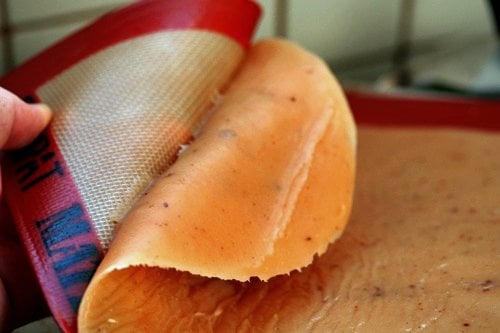
I also started reading more about molecular gastronomy and saw that there were some dedicated people, a worldwide community of cooks and chefs, who were involved with this. They’re incredibly passionate about learning and trying out these new ways of preparing food. And sharing techniques and tips. (Always a sign of a good cook, in my own book.) I’d scoffed, but as I shopped for some of these ingredients in Paris, which was nearly impossible, even though many of the ingredients and companies that distribute them are based in France, I thought that at one point, people considered the advent of baking powder, making bread with—gasp—powdered yeast, and grinding whole wheat berries into flour was probably really weird too.
So who am I to judge people working with new ingredients and inventing new, modern techniques for using them?
Is adding baking powder to make a cake rise all that different than using a seaweed-based gel to firm up a fruit puree? I don’t think so.
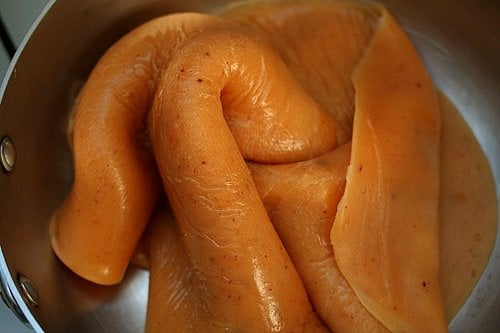
As I delved deeper, I began scouring the Alinea-Mosaic forums, and realized that this kind of kitchen tinkering was infectious and a bit addictive. Bakers and pastry chefs are probably the most dorky people in kitchens and there’s something about tinkering and tweaking things that’s appealing to us.
Every time I make a custard or bake a batch of cookies, I learn something. We love to play around and whenever I meet up with another baker, especially a professional one, we’re never at a loss for something to talk about. And when I was a restaurant chef, I can’t tell you how many SOS calls I made, and received, from other bakers and pastry chefs. We were all happy to share, because we all loved to learn.
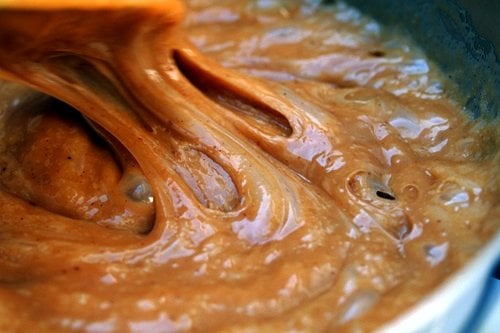
To make these recipes, one needs a bit of moxie and advanced-planning. Most of the food calls for ingredients with unpronounceable names that you’re not likely to keep on hand in your pantry. Certainly I didn’t. As one of the essays that introduce the book states; “Technology isn’t a break from the past. It’s an expansion.” I needed expand my culinary vocabulary, past doughs and batters and even recipes. And I also needed to befriend these ingredients.
Unfortunately, as mentioned, that wasn’t so easy. Although there are two large companies in France that make and export a lot of these ingredients, finding them in France proved a challenge. G. Detou has a decent selection, but not complete. And I got the name of a distributor at Rungis, the giant wholesale market outside for Paris, who didn’t return my phone calls.
So, once again, I was facing a French paradox: one can buy French tapioca maltodextrin in America, but not French tapioca maltodextrin in France.
Huh? In the spirit of my being able to find everything but what I’m looking for, I could only find maltodextrin made from corn, and I was hesitant to make any substitutions.
Thankfully, someone on the Alinea Mosaic forum gave me their contact at a professional food-service company located in the UK, and within a week, a five-gallon pail of the starch landed on my doorstep. An amount they considered a “sample”, so you can imagine what their usual orders look like.
I’m anything but a fan of useless powders sprinkled on rims of plates in restaurants, I wanted to start with two recipes that won me over, because they had my two of my favorite words in the English language: caramel and Nutella.
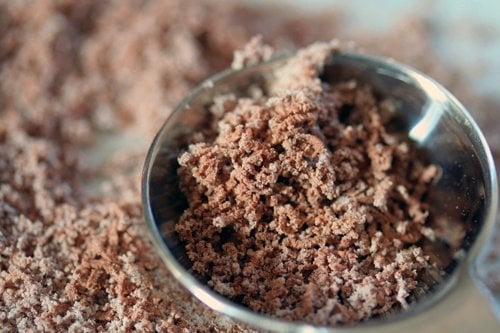
I’d bookmarked a Nutella powder recipe from Rob over at Hungry in Hogtown, mixing Nutella and tapioca maltodextrin. (Which we did for World Nutella Day.) I began mixing the feather-light tapioca powder with some store-bought Nutella, and when I added about half the recommended amount of tapioca, I could no longer stir any longer because it was just too thick. Remembering this was not about recipes, but techniques, I assumed it was done.
As Jeffrey Steingarten put it in one of the opening essays, “…science and technology do not do their own cooking.” You just have to do it. And because I used store-bought Nutella, it was all part of the spirit of experimentation. Not merely following a recipe word-for-word
I continued stirring and pretty quickly the Nutella turned into a powder, which I tried passing through a sieve (as advised), but after five minute of the longest minutes of my life, I ended up with a few meager tablespoons. So I passed it through a food mill.
And when I stuck a spoonful in my mouth, I was surprised by how delicious it was. It had the deep chocolate and hazelnut flavor of gianduja, and the feathery powder liquefied when I spooned it in my mouth.
After my success, I was ready to tackle Dry Caramel, Salt, which Carol from Alinea at Home made and had classified under “Easy.” Along with the recipe where she washed and cleaned 20-pounds of lettuce and spent an hour and twenty minutes pureeing and squeezing the juice through a cheesecloth to extract what looks like one cup of juice. (Which gives credibility to what most men know: women have a different definition of “easy” than we do.)
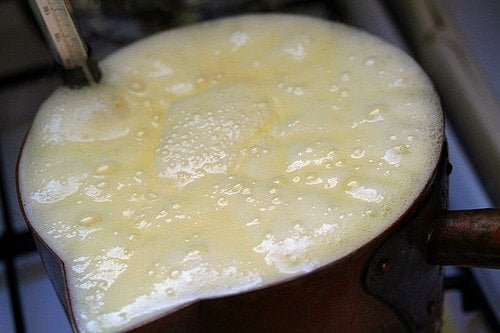
I made the caramel is a medium saucepan, as indicated by the recipe. I’m not sure what “medium” means in Chicago, but I take it to mean about four quarts. Unfortunately the caramel bubbled up and made a mess of my stove, so I swapped “medium” for “large” and continued. That is, after I spent an hour and twenty minutes cleaning caramel off my stovetop. (Carol, I noticed, began with a large Dutch oven. So I guess, on the other hand, us men have a different definition of what “large” is.)
And for anyone with an aversion to corn syrup, I don’t recommend this recipe. Like, at all.
I don’t mind using a touch of corn syrup here and there, but adding a few cups by the glugful, I thought for sure the HFCS police were going to come crashing through my ceiling and swoop me away and deposit me in the rightful hell that faces those of us who lay our hands on a bottle of the evil sap.
And speaking of chemicals, as anyone whose ever gotten a faceful of cocoa powder from turning on a standing mixer with a bowl full of the stuff, tapioca maltodextrin, or what I’ve come to affectionately call “My green bin of Z-Norbit M for Food Use” should know that this stuff is lighter than air, and makes quite a mess if you don’t have the world’s steadiest hands. I ended up looking like an extra from the movie Blow.
To begin, I cooked the caramel to the recommended temperature of 230F, which is less than the soft-ball stage. I wrote to Carol, who assured me that she’d cooked hers to that temperature. But mine didn’t harden at all after I poured it out and let cool. I’m not sure what happened. I didn’t want to let any of it go to waste, so I guess that part of me is still hopelessly old-fashioned. I checked my thermometer, but again, thinking that this kind of cooking depends on intuition and experimentation, I remelted and recooked my caramel to 300F, then let it cool in my high-tech cooling chamber—aka: Paris.
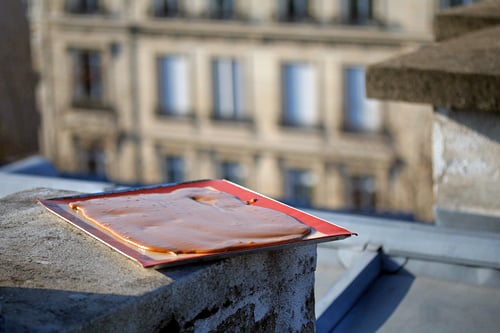
Sure enough, my caramel cracked into beautiful shards. Although personally, I would’ve added some baking soda to the caramel at the last moment, to lighten it up. But perhaps they were worried about mixing too-many chemicals in the food.
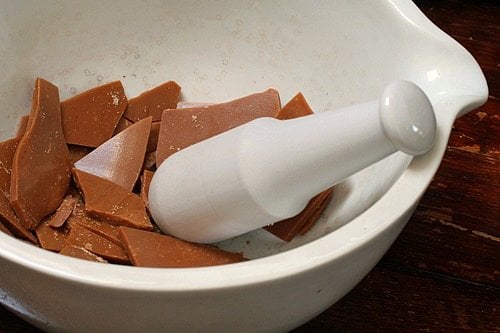
Afraid my food processor might scoff at grinding up such big shards, I resorted to my old-fashioned (and insanely-heavy) mortar & pestle, before whizzing it finely in my newfangled Braun Multiquick Artiste. And because now that I’m making all this fancy-cool food, I’m considering myself an artiste, too
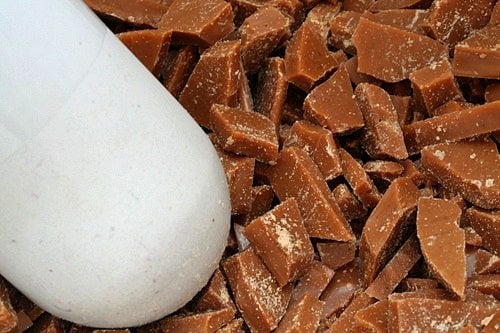
The first bite was kind of curious, and I felt like I was eating a mouthful of powder. (Which, of course, was because I was.) Then I put a bit of fleur de sel on it, as recommended in the recipe, and the whole thing came alive. The dark caramel flavor melted like a buttery bite of toffee on my tongue, without the fatty aftertaste. Just the intense flavor of burnt sugar with little sparks of salt. Oddly, the success of this high-tech dessert depending on a traditional, centuries old, hand-harvested ingredient: sea salt. So it’s not just about unusual products and new techniques. Nothing will ever replace ‘taste’ as the ultimate criteria, and my batch of Dry Caramel, Salt certainly fit the bill.
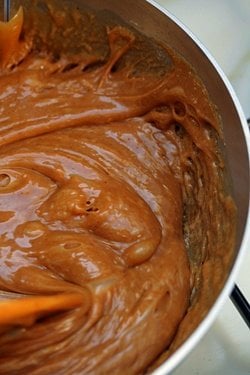
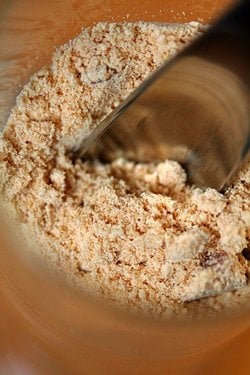
Afterward I cleaned the food processor (even us artistes aren’t immune from grunt work) and proceeded to break up the rest of the caramel into a smaller bits, to store in an airtight container and probably fold into a batch of of ice cream. (I’m still scratching my head why the recipe has you make so much caramel is you’re only going to be using a small portion of it. Next time, I’ll cut the recipe in half.)
As I continued grinding it, I thought, “I wonder what it would be like if I kept going with it?” So I did, turning it into caramel powder, without the tapioca maltodextrin.
Once it was very fine, I stopped the machine and tasted a spoonful: the dark caramel melted in my mouth and tasted perfect. Then I took a chunk of apple that I was snacking on and smushed it in the fine caramel powder, which liquefied just a little bit with apple flesh. Biting into it, the combination of slightly crunchy caramel and sweet-sour apple juices along with a touch of salt was delectable.
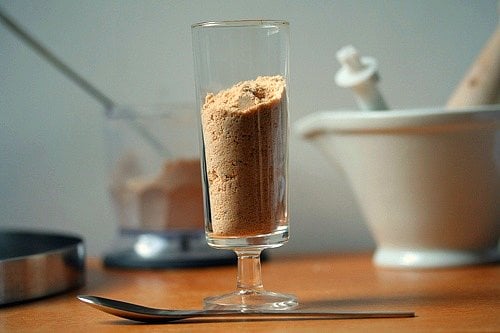
I thought how interesting it was that all that work kind of took me back to where I started. Following Grant Achatz, I took a different route that I might normally take. And because of him, I’ve added two new desserts to my repertoire. Plus I learned a new technique that I’m thinking I might use to serve or garnish a dessert with in the future.
I’m glad I got over my initial skepticism and kept an open mind. Because if I didn’t, I’d have missed out these wonderful-tasting powders. And I realized that Chef Achatz and I aren’t all that far apart. We’re just taking different routes to get to the same place.
Where to Get Ingredients for Molecular Gastronomy
(In France)
(In the United States)
Related Recipes and Molecular Gastronomy Links
Alinea by Grant Achatz
Molecular Gastronomy at Home (Aidan Brooks)
Homemade Nutella Powder (Video of Will Goldfarb)
New Publishing Model May Result in More Innovative Cookbooks (Michael Ruhlman)
Grant Achatz Explains Alinea (Video)
Molecular Gastronomy (Hérve This)
Tapioca Maltodextrin Discussion (eGullet)
Molecular Gastronomy Cheat Sheet (Chow)
Nutella Powder (Hungry in Hogtown)
Eat Your Spherified Vegetables! (Slate)
White Chocolate Mousse with Black Olive Nougatine and White Chocolate Powder (Adrian Vasquez)








